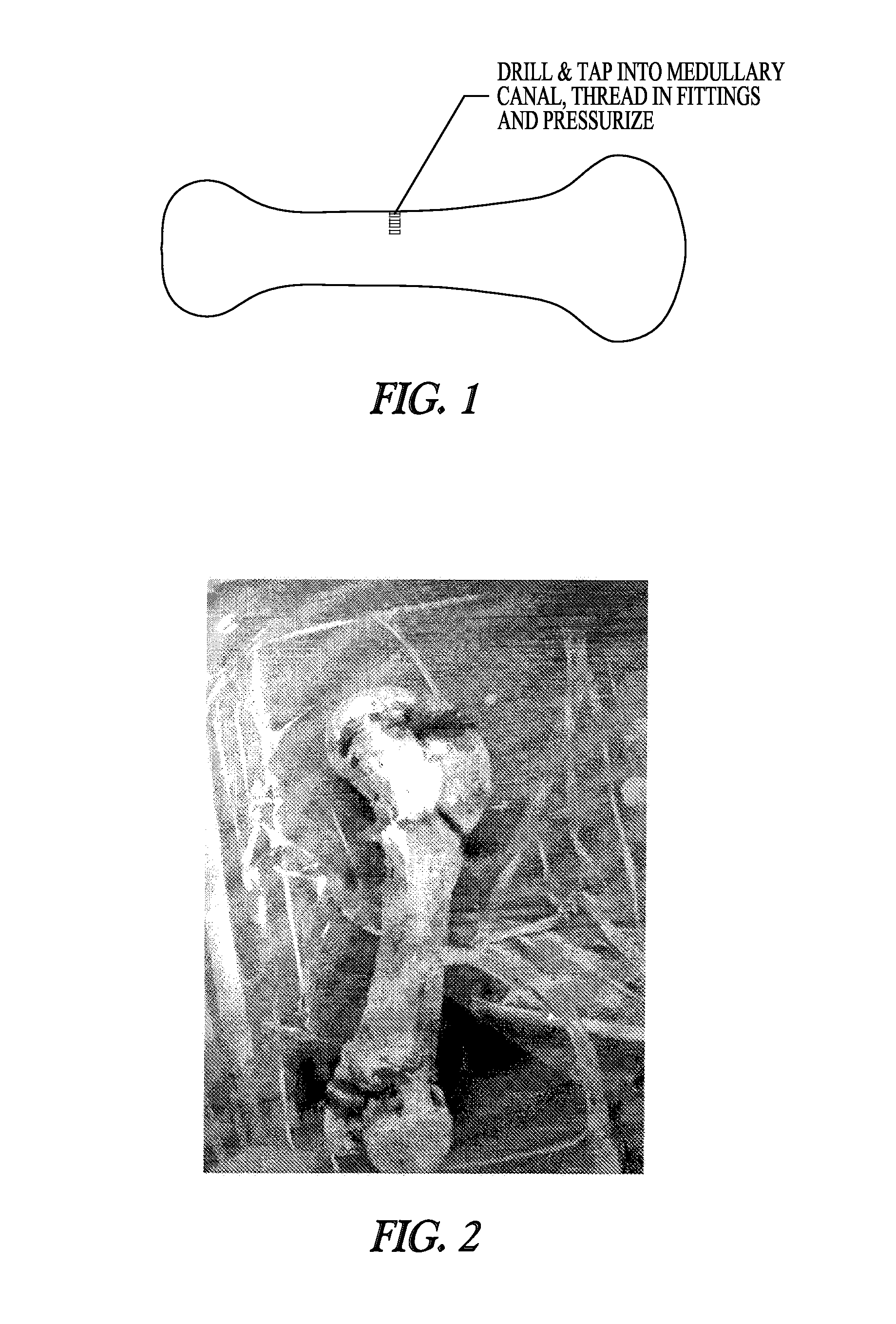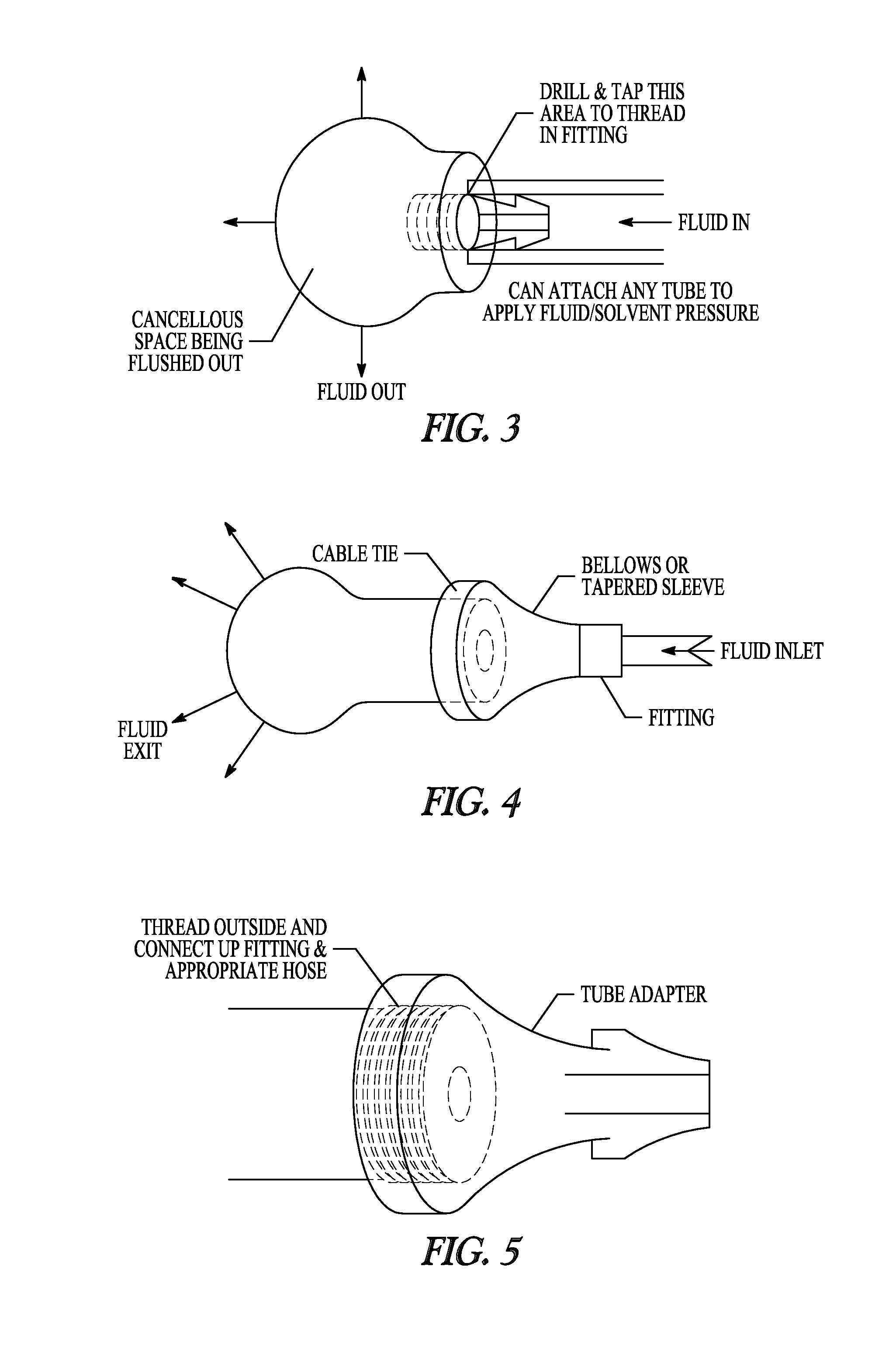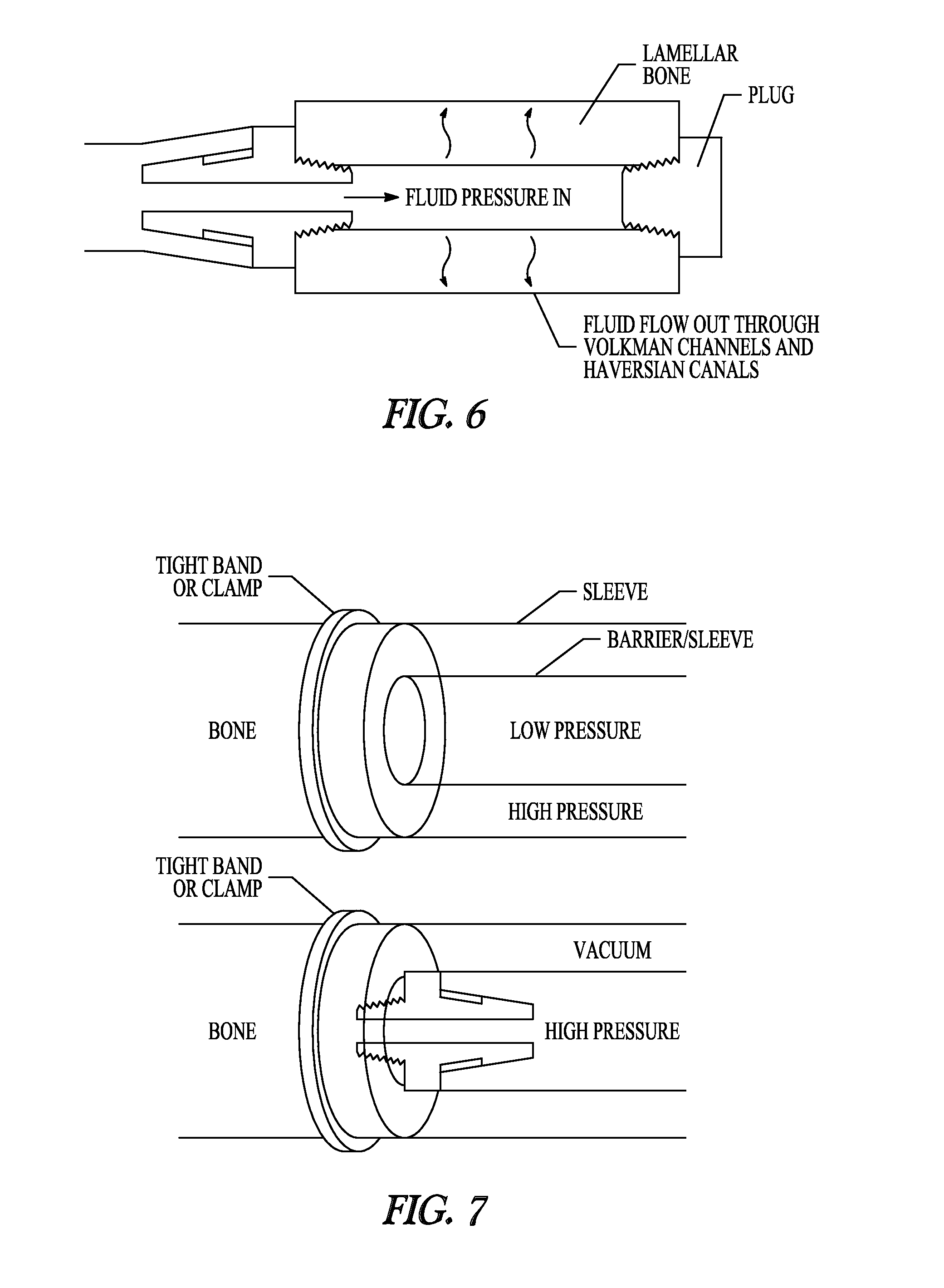Methods of decellularizing bone
a bone and bone technology, applied in the field of bone decellularization, can solve the problems of iatrogenic complications, time and expense, and autograft from the iliac crest, proximal tibia or distal femur, and achieve the effect of improving revascularization
- Summary
- Abstract
- Description
- Claims
- Application Information
AI Technical Summary
Benefits of technology
Problems solved by technology
Method used
Image
Examples
example 1
[0090]A 0.242 inch hole was drilled in the diaphysis of a porcine femur to facilitate the tapping and placement of a ⅛″ national pipe thread (NPT) tapered fitting. A ⅛″ ID tube was then connected to the fitting, and the bone was placed into 10 liters of 0.5% SDS solution and perfused at a constant pressure of 600 mmHg for 60 hours. Solutions were changed every 6-12 hours and allowed to recirculate between fluid changes. Pressure was maintained via a controlled system utilizing a pressure sensor and an automated voltage feedback loop to control the pump speed. During the 60 hours, the flow rate varied from 1.0-60 mL / min. Decellularization was evident by the active egress (exiting) of cellular material through the native bone vasculature.
[0091]It is to be understood that, while the methods and compositions of matter have been described herein in conjunction with a number of different aspects, the foregoing description of the various aspects is intended to illustrate and not limit the ...
PUM
| Property | Measurement | Unit |
|---|---|---|
| pressure | aaaaa | aaaaa |
| pressure | aaaaa | aaaaa |
| pressure | aaaaa | aaaaa |
Abstract
Description
Claims
Application Information
 Login to View More
Login to View More - R&D
- Intellectual Property
- Life Sciences
- Materials
- Tech Scout
- Unparalleled Data Quality
- Higher Quality Content
- 60% Fewer Hallucinations
Browse by: Latest US Patents, China's latest patents, Technical Efficacy Thesaurus, Application Domain, Technology Topic, Popular Technical Reports.
© 2025 PatSnap. All rights reserved.Legal|Privacy policy|Modern Slavery Act Transparency Statement|Sitemap|About US| Contact US: help@patsnap.com



